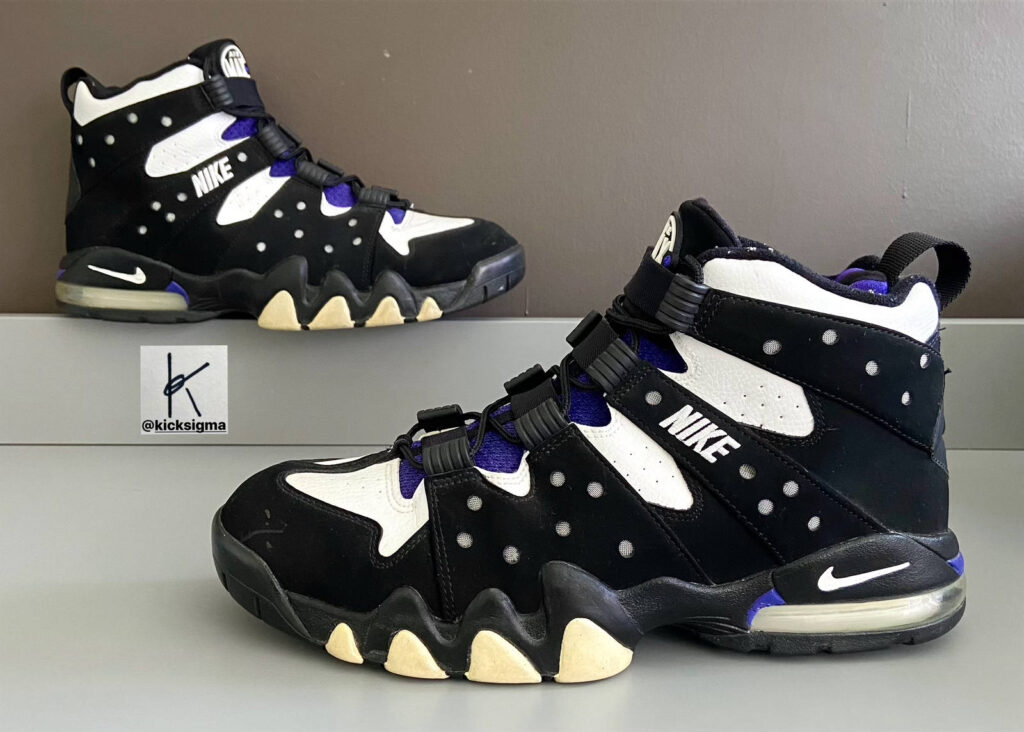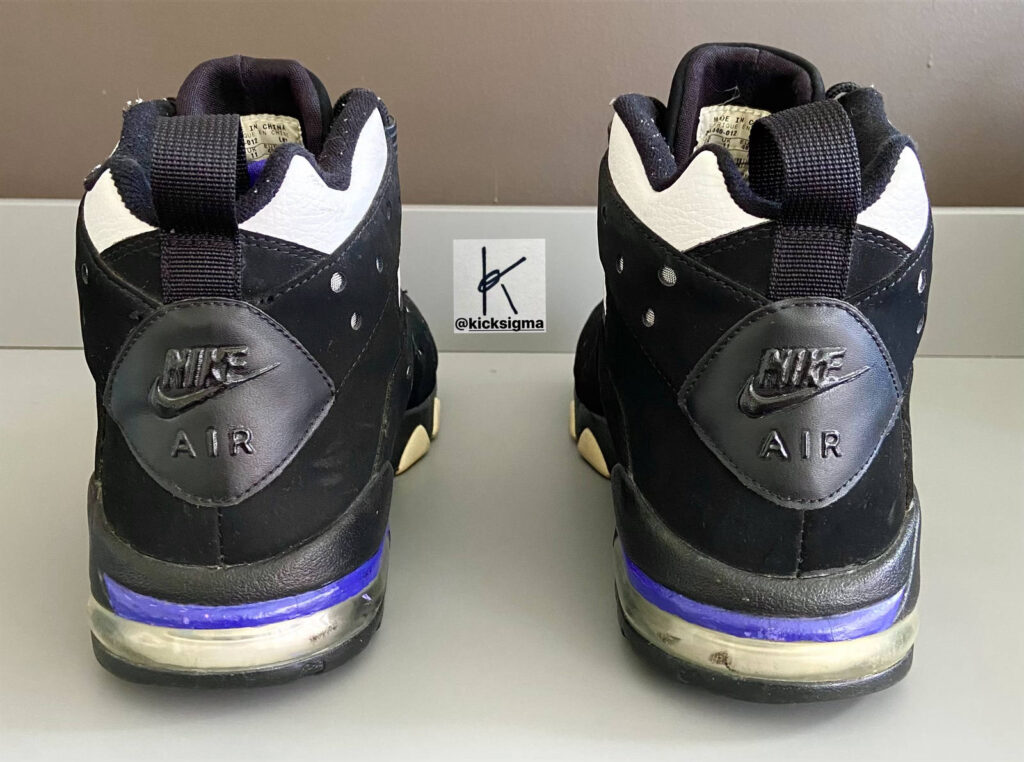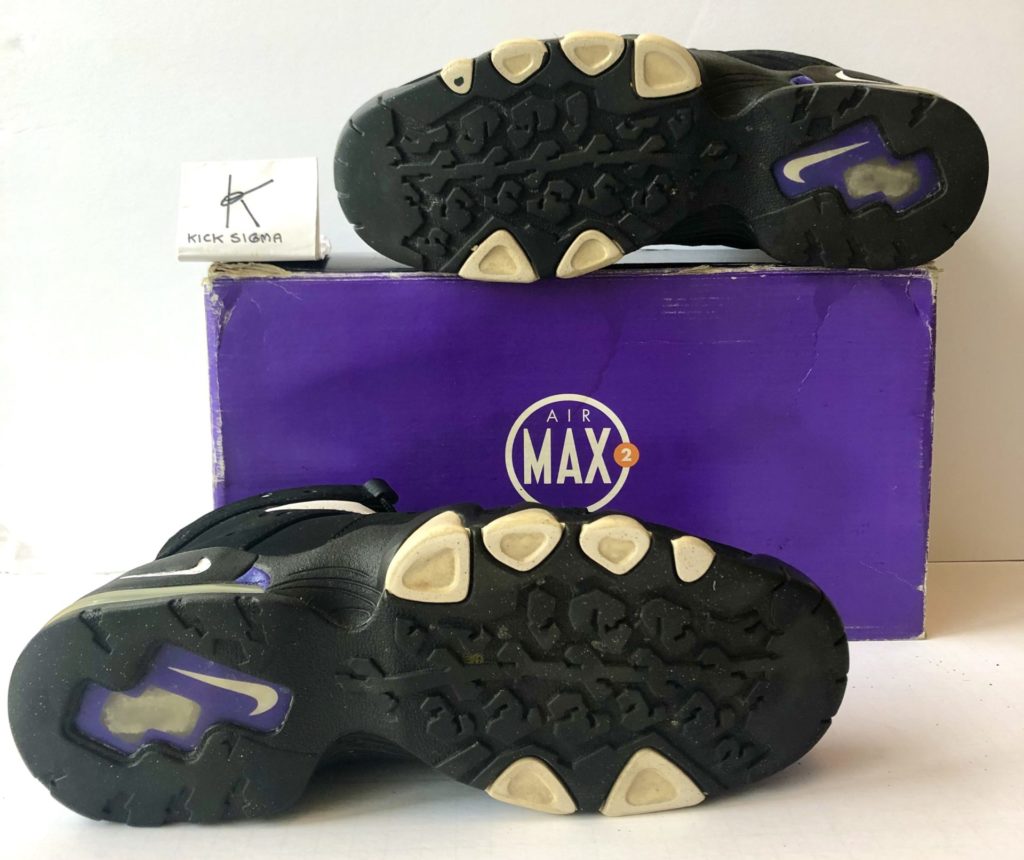
QUICK FACTS
Player: Charles Barkley
Colorway: white/black/dark-concord
Original Release: 1994
Designer: Tracy Teague
Release Type: General release
Weight: 16.4 ounces
We review products independently, but we may earn affiliate commission from purchases made through links on this page.
[convertkit form=3021609]
BACKGROUND
Still not a role model…
The mission: design a shoe for an aggressive, undersized Power Forward whose controversial “I am not a role model” commercial became the personification of his career.
Like many things surrounding Charles Barkley, that infamous 1993 Nike commercial is often misunderstood. What Barkley was saying was that kids shouldn’t view him as a role model simply because he is a professional athlete. Instead, they should look to parents and teachers as role models.
Unfortunately for Sir Charles many people, including then NBA commissioner David Stern, felt that NBA players were obligated to be role models and that Barkley’s statements in the commercial signaled a refusal of this obligation. The fact that Barkley was the 1993 NBA MVP probably didn’t help his case either.
Regardless of whether you agree with Barkley’s statement, designer Tracy Teague now had to create a sneaker that captured Sir Charles’ brash personality while still appealing to the masses. The result: The Air Max 2 CB.

Released in 1994, the Air Max 2 CB came in three original colorways. The white/black/dark-concord colorway was easily the most popular. Barkley debuted the shoe on April 29, 1994, for game 1 of the first round of the playoffs against the Golden State Warriors. He scored 36 points, grabbed 19 rebounds and dished out 7 assists to lead the Suns over the visiting Warriors 111-104.
Barkley would continue to wear the Air Max 2 CB through the rest of the ‘94 playoffs and for the entirety of the ‘94-’95 regular season before debuting his next shoe, the Air CB34, during the first round of the ‘95 playoffs against the Portland Trailblazers.

To date, the white/black/dark concord colorway has retroed four times: in 2003, 2009, 2015 and 2020. Each retro deviated from the OG in its own way. Like most retros, they sported the thinner, more environmentally friendly Air bubbles and lacked the dual density Air Max 2 cushioning system that the OGs possessed.
The 2003 version omitted the dark-concord altogether, opting instead for a black mesh tongue with sport-royal blue accent on the collar and inner portions of the shoe.
The 2009 came closest to the OG, but used purple instead of dark-concord and a white “Nike Air” blocking on the heel instead of black like the OGs. They also omitted the dark-concord accent above the Air bubble, leaving it black instead.
The 2015 and 2020 retros resembled the 2009 versions, but changed the vertical black line along the center of the tongue from black to purple as well as changing the color of the Air bubble from clear to purple.
Despite numerous retros and deviations, the Air Max 2 CB remains one of the most coveted 90s basketball sneakers and is arguably the most popular shoe from the acclaimed Charles Barkley signature line. Not bad for such a polarizing design!

DESIGN FEATURES
Taking its inspiration from a straight jacket, the Air Max 2 CB featured a Durabuck and leather upper reinforced with lateral outriggers, a metal mesh-backed strapping system, elastic arch straps, a quick lace system with plastic lace locks and a Dynamic-Fit inner sleeve.
The polyurethane midsole was cushioned with a dual density visible heel Air Max unit, hence the “Air Max 2” name and had four white pods or “teeth” for traction on the lateral forefoot and two additional pods on the medial forefoot. Despite its rugged exterior, the Air Max 2 CB was surprisingly light, weighing only 16.4 ounces.

PRICE
The Air Max 2 CB retailed at $134.95 in 1994, about $234 in 2020 dollars. The 2003 retros retailed at $120 (about $167 in 2020). The 2009 retros retailed at $120 ($143 in 2020). The 2015 retros retailed at $140 (about $151 in 2020). Finally, the 2020 retros retailed at $160.
The price of the Air Max 2 CB has fluctuated over time. When adjusted for inflation, the Air Max 2 CB was most expensive in 1994 before dropping significantly in 2009. The price rose slightly from 2009 to 2015 and again in 2020.